The floating system, simply put, the cultivation of crops on substrate-filled growing trays floating on a 30-centimeter water layer, has undergone significant development in recent years. According to the team of Light4Food, this cultivation system stands out for its simplicity, flexibility, and the variety of crops that can be grown on this system. "The system is easily scalable and provides predictable and high-quality cultivation of baby leaf, teen leaf, head lettuce, and herbs. In the United States of America, the system is USDA Organic certified."
Light4Food is a complete turnkey builder and system integrator for this cultivation technique and automation. "Our project designs are based on efficiency in both cultivation and operational processes, with particular attention to hygiene aspects," they say. From the project design, the company constructs machine lines in which its own manufacturing machines, as machines from other suppliers, are integrated into complete turnkey processing lines installed on-site.
In recent years, Light4Food has completed projects of various sizes in Europe and North America. A recent project of 8 hectares was completed in the United States of America.
Meanwhile, Light4Food has been working on further developing the system.
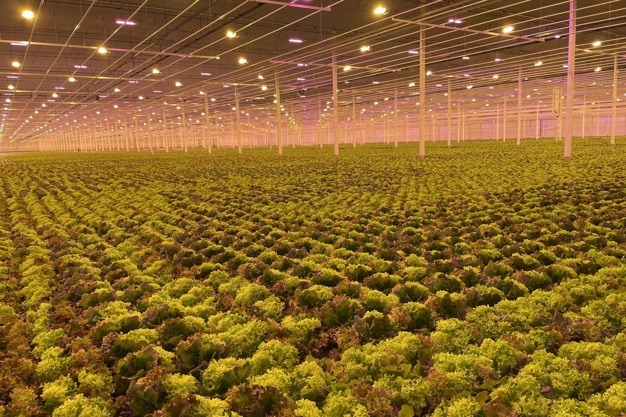
Floater Development
For the past three years, Light4Food has collaborated with the startup Triple Green Innovation (TGI). TGI specializes in developing and producing custom floaters. Through this partnership, new floaters are being developed that are optimal for both cultivation and mechanization. Niels Jacobs of Light4Food states, "Through this collaboration, we can quickly respond to new market demands. Recently, we introduced a new floater to various projects that is independent of propagation systems. The floater can support various pots, plugs, and substrates, making it convenient for smaller growers without their own propagation setup."
Newly developed floaters undergo testing in Light4Food's Indoor GrowHow Facilities before being deployed in practical applications. Bram Kuipers from Triple Green Innovation emphasizes the importance of collecting cultivation data and testing floaters effectively in Light4Food's machines.
In these facilities, Light4Food has been engaged in hydroponic spinach cultivation for over 10 years, addressing a well-known challenge in water-based cultivation. Niels Jacobs mentions, "New insights bring us closer to the solution of year-round spinach cultivation on the same water."
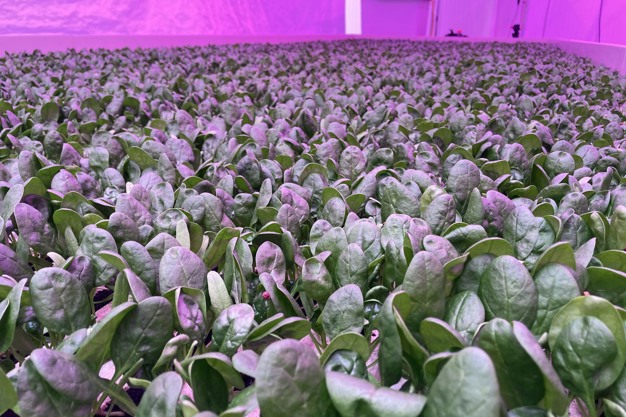
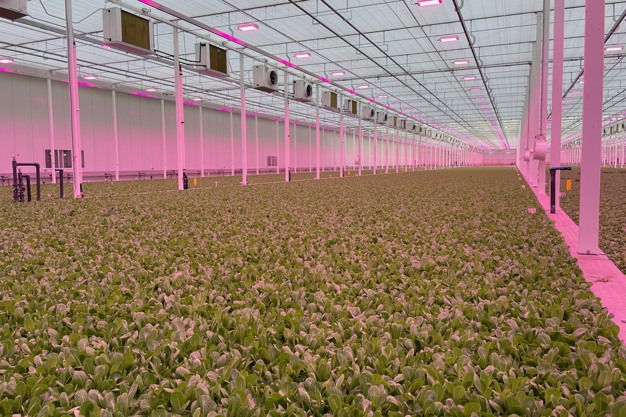 Spinach and Floater Research in Light4Food's Test Facility
Spinach and Floater Research in Light4Food's Test Facility
New Baby/Teenleaf Floating System using Paper Plugs
Over the past two years, Light4Food, in collaboration with TGI, has developed a new system for Teenleaf, Babyleaf, and Head Lettuce. By using small paper plugs in a specially designed floater, the initial weeks of the growth cycle can occur at high density. The paper plugs are produced by machines from their partner, Ellepot. Propagation can be optimized in a propagation cell or a separate greenhouse section. Strong plants are developed with an optimally designed light spectrum for plant propagation. After the propagation period, the paper plugs are transferred to a floater. The efficiency of the floating system takes a significant leap with this development, showing a 20% increase in yield while reducing substrate consumption by 75% compared to the slot floater. This development has been extensively tested in Light4Food's test facility and is now ready for practical use.
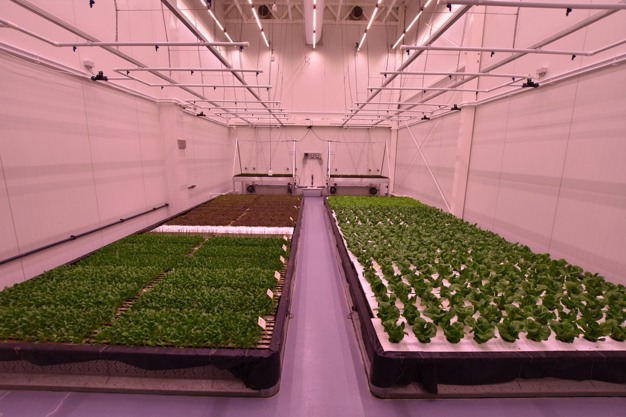
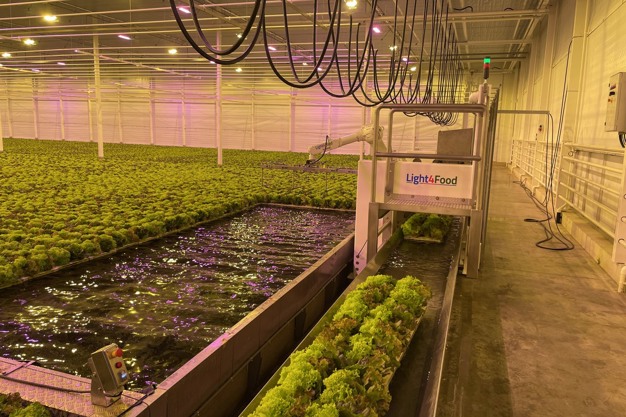 Light4Food Floater Handling Robot
Light4Food Floater Handling Robot
The final steps toward a fully automated floating system have also been taken. Light4Food has developed the 'push system,' which moves floaters within the ponds, ensuring an automatic "first-in, first-out" process.
Once the cultivation cycle is complete, floaters lie at the end of the ponds. Until now, these floaters were manually removed from the ponds by people and placed in the transport channel to the processing area. This step has also been automated. Light4Food has developed a Floater Handling Robot that autonomously retrieves floaters from the pond and places them in the transport channel. Niels Jacobs explains, "When the robot has emptied the row of floaters, it communicates with the push system, indicating that the remaining floaters in the pond can be pulled to the end of the pond. Once the floaters are back in place, the push system signals the robot to resume its work." The handling capacity of the robot is synchronized with the speed of the harvesting processes. The Floater Handling Robot has been operational for several months on a 2.5-hectare project and is now available for the market.
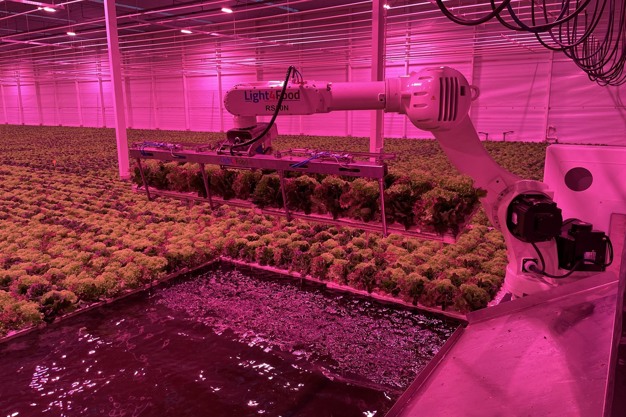 Light4Food Floater Handling Robot
Light4Food Floater Handling Robot
Mobile Harvesting Machine
In addition to harvesting machines integrated into complete production lines, Light4Food has developed Mobile Harvesting Machines for harvesting trays, mobile gutters, and cultivation tables. These harvesting machines can easily be placed over an existing transport system.
The harvesting machines are designed for harvesting 'Ready to Eat' crops and comply with all Food Safety standards. The machines can harvest leafy vegetables such as head lettuce, Romaine lettuce, Babyleaf, Teenleaf, and herbs. Additionally, this machine is suitable for microgreens and cress. The harvesting machines are already in use at multiple greenhouse growers and indoor farms worldwide. The machine can harvest and convey the product in various widths, ranging from 10 cm to 180 cm, covering everything from cultivation gutters to complete cultivation tables.
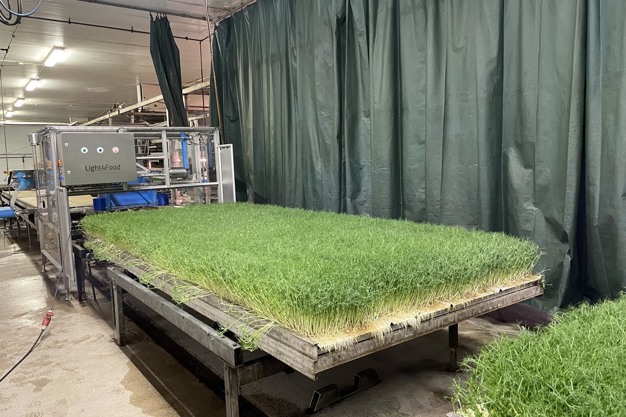
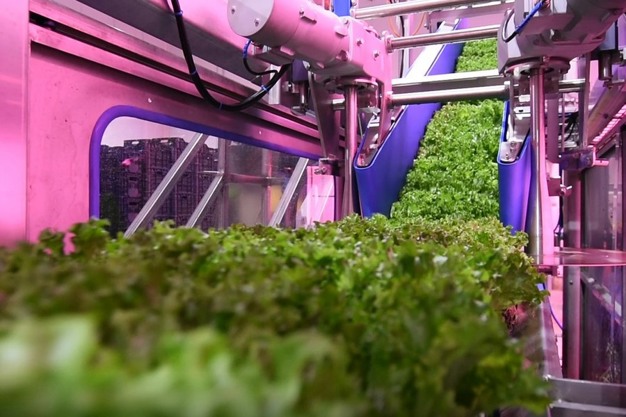 Harvester for gutters, floaters, and cultivation tables up to 1.8 meters in width
Harvester for gutters, floaters, and cultivation tables up to 1.8 meters in width
Mobile Washing Machine
In addition to the industrial floater washing machine, Light4Food has developed a smaller washing machine for emptying and washing various types of floaters. These machines can be placed behind the harvesting machine or used as stand-alone units. The waste from the floaters is transported away with a separate waste transport system to a container or substrate recycling system. This smaller washing machine has been deployed in multiple projects with cultivation areas up to 1 hectare.
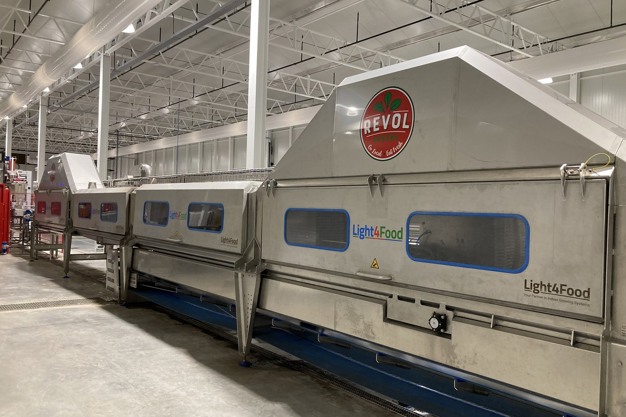 Light4Food Washing Machines
Light4Food Washing Machines
Light4Food will be present at the Fruit Logistica in Berlin from February 7 to 9. Visit their stand in hall 3.1/A.40 or schedule a visit to Light4Food's Test Facility.
For more information: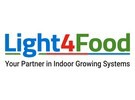
Light4Food
sales@light4food.com
www.light4food.com
